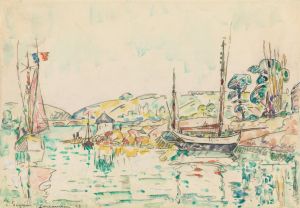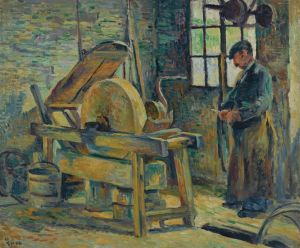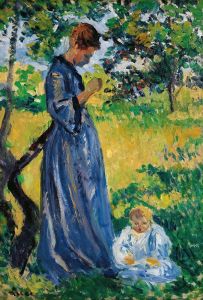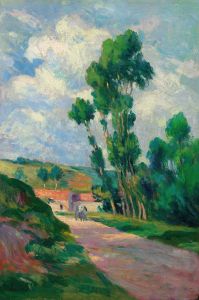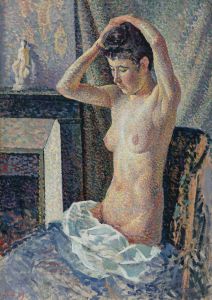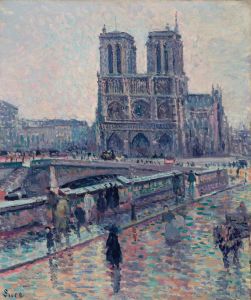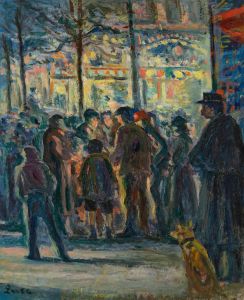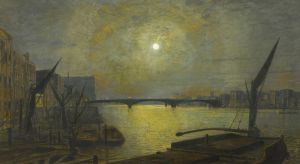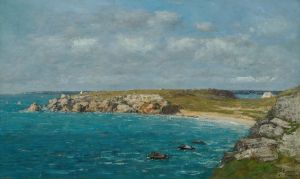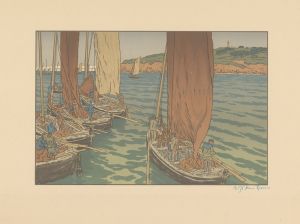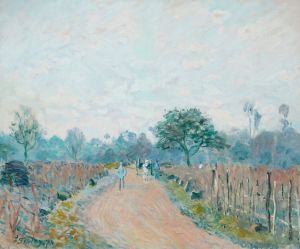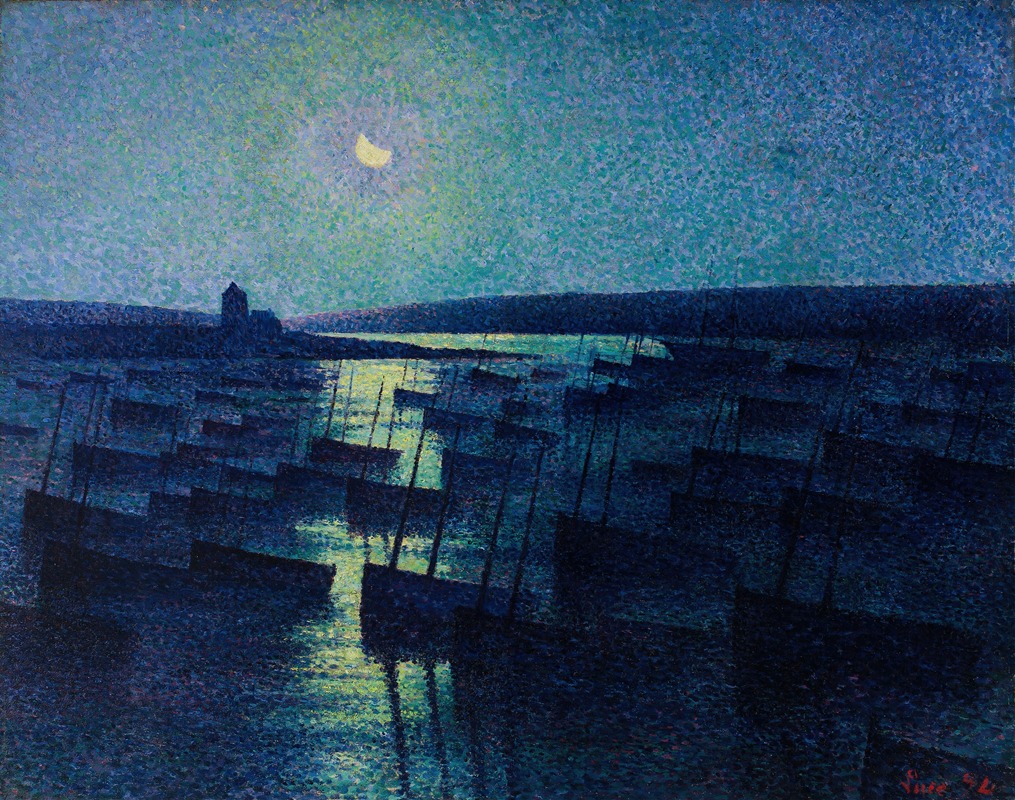
Camaret, Moonlight and Fishing Boats
A hand-painted replica of Maximilien Luce’s masterpiece Camaret, Moonlight and Fishing Boats, meticulously crafted by professional artists to capture the true essence of the original. Each piece is created with museum-quality canvas and rare mineral pigments, carefully painted by experienced artists with delicate brushstrokes and rich, layered colors to perfectly recreate the texture of the original artwork. Unlike machine-printed reproductions, this hand-painted version brings the painting to life, infused with the artist’s emotions and skill in every stroke. Whether for personal collection or home decoration, it instantly elevates the artistic atmosphere of any space.
Maximilien Luce's "Camaret, Moonlight and Fishing Boats" is a notable work of art that exemplifies the artist's skill in capturing the interplay of light and color, a hallmark of the Neo-Impressionist movement. Luce, a French painter born in 1858, was a prominent figure in this movement, which was characterized by its scientific approach to color and light, building upon the foundations laid by Impressionism.
The painting depicts the serene coastal town of Camaret-sur-Mer, located in Brittany, France. This region was a popular subject for many artists of the time due to its picturesque landscapes and unique lighting conditions. Luce's choice of Camaret as a subject reflects his interest in capturing the natural beauty and atmospheric qualities of specific locales.
In "Camaret, Moonlight and Fishing Boats," Luce employs the technique of Divisionism, a method associated with Neo-Impressionism, where colors are applied in small, distinct dots or strokes. This technique allows for the optical mixing of colors when viewed from a distance, creating a luminous effect that enhances the depiction of moonlight on the water and the boats. The painting's composition is carefully structured to guide the viewer's eye across the canvas, from the shimmering water to the silhouetted boats and the glowing moon above.
Luce's use of color in this painting is particularly noteworthy. The palette consists of cool blues and greens, which dominate the scene and evoke the tranquil, nocturnal atmosphere of the coastal setting. The moonlight is rendered with subtle gradations of white and pale yellow, creating a gentle contrast with the darker hues of the sea and sky. This careful attention to color and light not only captures the physical appearance of the scene but also conveys a sense of calm and introspection.
Maximilien Luce was deeply influenced by the social and political climate of his time, and his works often reflect his anarchist beliefs and commitment to social justice. While "Camaret, Moonlight and Fishing Boats" is primarily a landscape, it can also be seen as an expression of Luce's appreciation for the simple, hardworking lives of the fishermen and the natural world they inhabit. The painting does not overtly convey a political message, but it embodies Luce's broader artistic philosophy of finding beauty and meaning in everyday scenes.
Throughout his career, Luce was associated with other leading figures of the Neo-Impressionist movement, such as Georges Seurat and Paul Signac. His work was exhibited widely, and he gained recognition for his contributions to the development of modern art. "Camaret, Moonlight and Fishing Boats" is a testament to his mastery of the Neo-Impressionist style and his ability to convey mood and atmosphere through the innovative use of color and technique.
Today, Luce's paintings are held in high regard and can be found in major art collections and museums around the world. "Camaret, Moonlight and Fishing Boats" remains an exemplary piece within his oeuvre, illustrating the enduring appeal of his artistic vision and the Neo-Impressionist movement as a whole.





